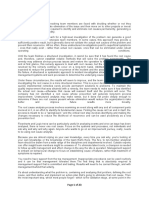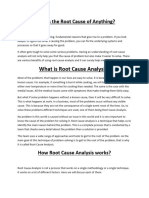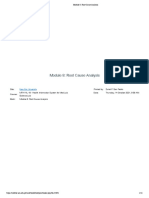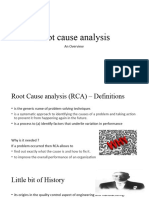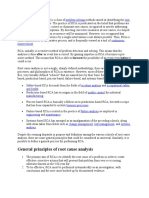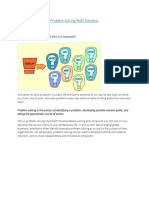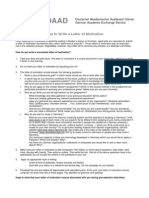0% found this document useful (0 votes)
21 views3 pagesRoot Cause Analysis
Root cause analysis is a systematic approach to identifying the fundamental reasons behind problems, aiming for sustainable solutions rather than superficial fixes. It involves defining the problem, gathering information, analyzing root causes, developing and implementing solutions, and monitoring their effectiveness. Tools such as the '5 Whys', Ishikawa Diagram, and Pareto Chart assist in this process, enabling organizations to address multiple root causes effectively.
Uploaded by
glenn.lumitiCopyright
© © All Rights Reserved
We take content rights seriously. If you suspect this is your content, claim it here.
Available Formats
Download as DOCX, PDF, TXT or read online on Scribd
0% found this document useful (0 votes)
21 views3 pagesRoot Cause Analysis
Root cause analysis is a systematic approach to identifying the fundamental reasons behind problems, aiming for sustainable solutions rather than superficial fixes. It involves defining the problem, gathering information, analyzing root causes, developing and implementing solutions, and monitoring their effectiveness. Tools such as the '5 Whys', Ishikawa Diagram, and Pareto Chart assist in this process, enabling organizations to address multiple root causes effectively.
Uploaded by
glenn.lumitiCopyright
© © All Rights Reserved
We take content rights seriously. If you suspect this is your content, claim it here.
Available Formats
Download as DOCX, PDF, TXT or read online on Scribd
/ 3


















